Carbonara is a Roman pasta dish that combines spaghetti, egg yolks, guanciale, pecorino, parmigiano, and black pepper.
There are many variations of this famous dish. Here, we are showing you how it's made in Rome today.
You'll learn to make a creamy carbo-mix with eggs and cheese, crispy guanciale, and perfectly cooked spaghetti.
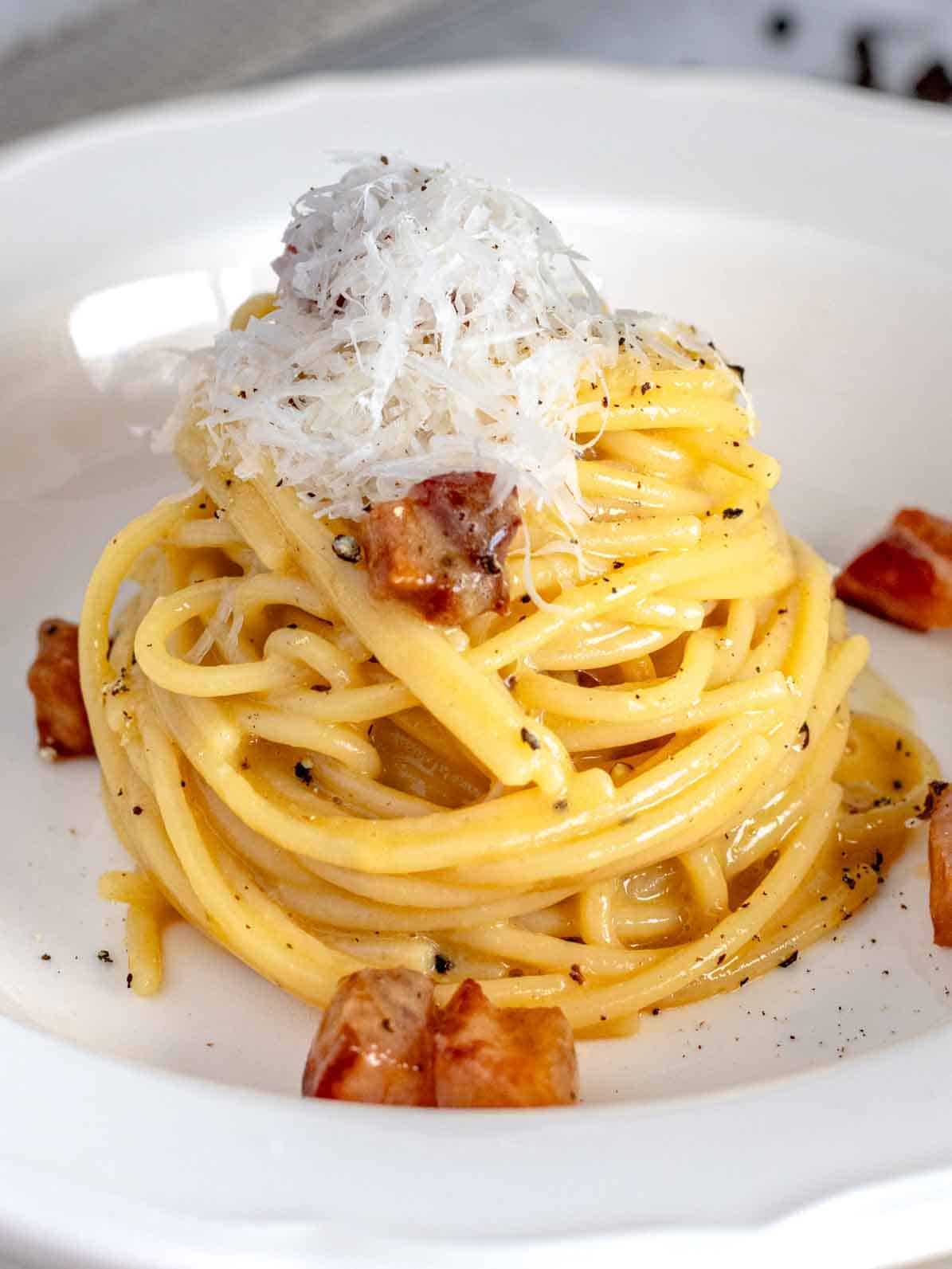
What is carbonara?
Carbonara is probably the most popular and most controversial pasta dish.
Historically, carbonara included ingredients like bacon, ham, cream, and garlic.
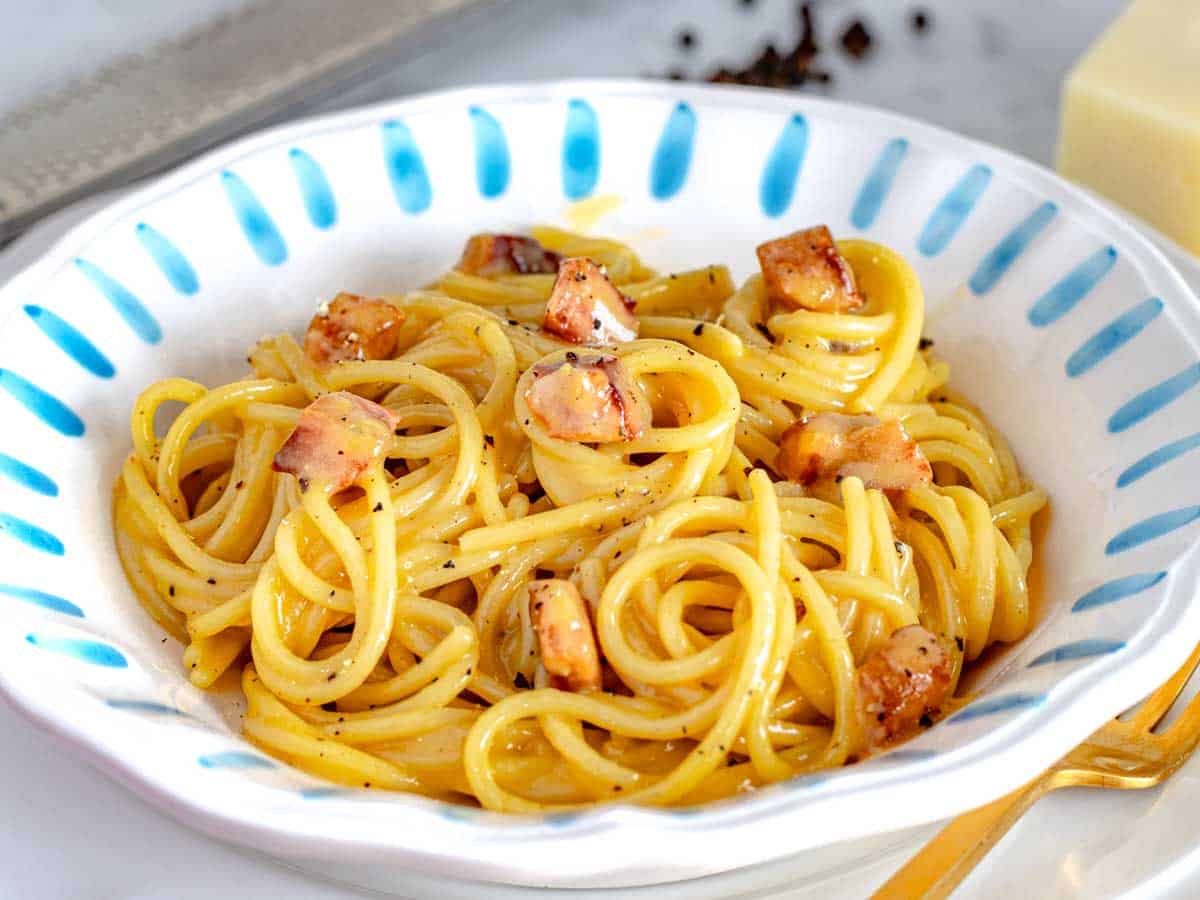
However, I'll show you the authentic modern Italian recipe for spaghetti alla carbonara.
I learned this recipe from Roman Chef Luciano Monsilio, the king of carbonara himself.
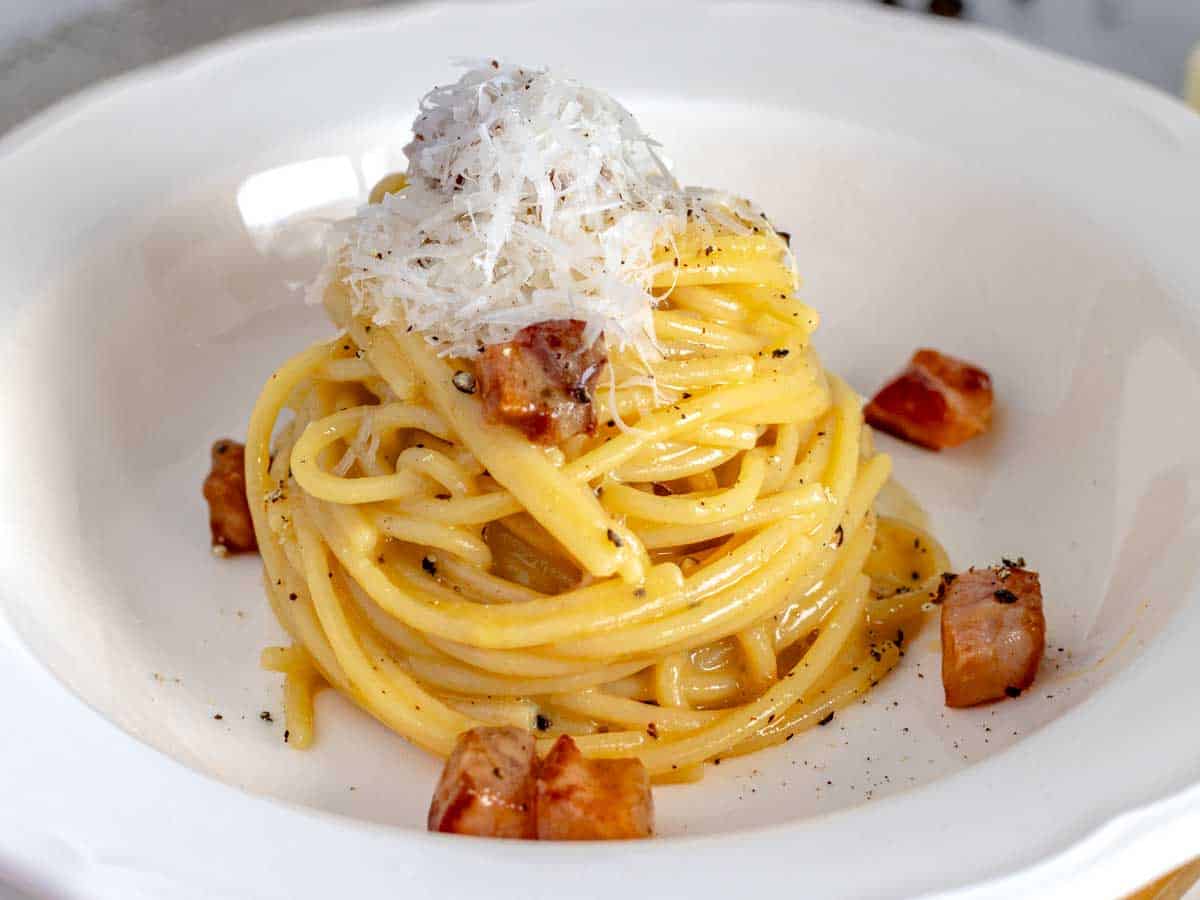
If you travel to Rome today, this is what you will eat. And you will love it.
Follow our steps, and you can eat Carbonara at home, just like in Rome.
Ingredients for carbonara
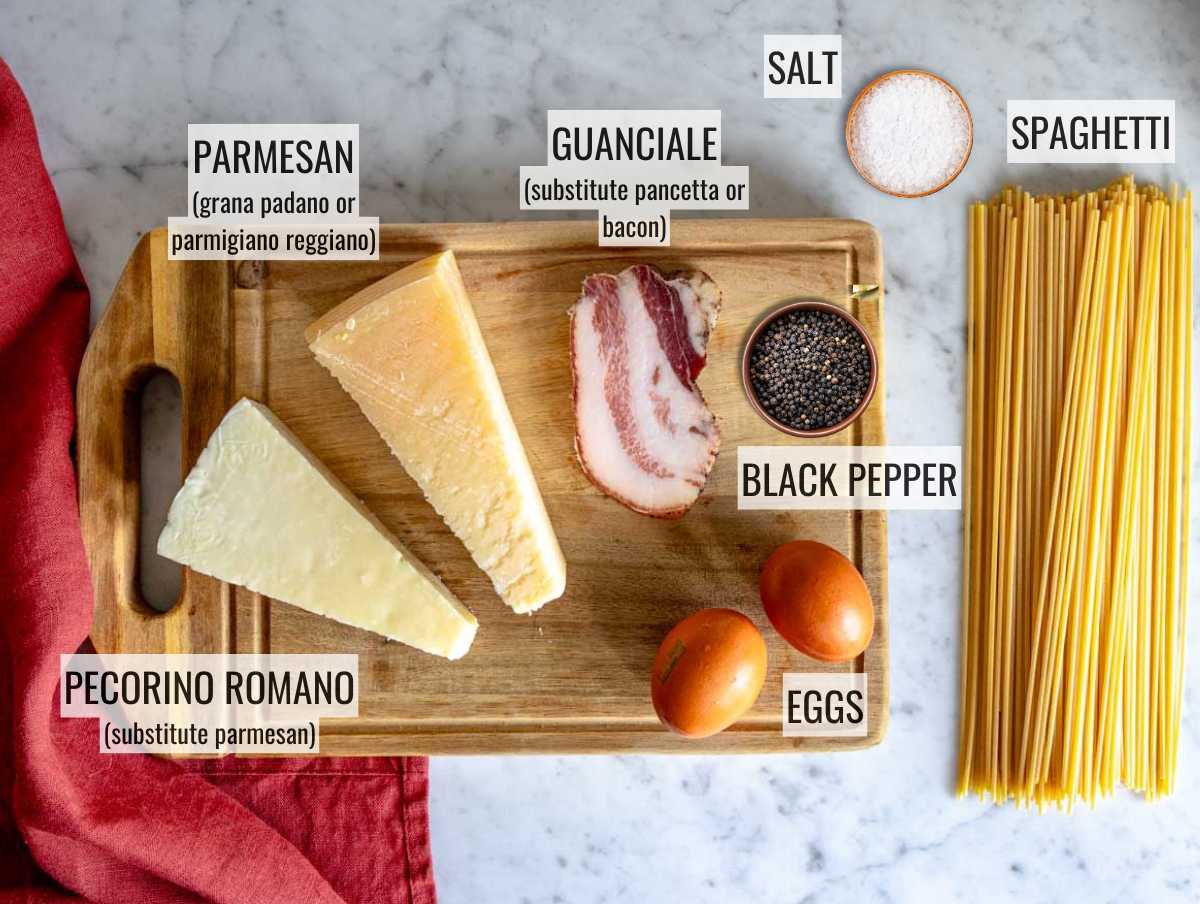
Quantities are in the recipe box at the bottom of the page.
Spaghetti: substitute tonnarelli, pici, strangozzi, maccheroni, or rigatoni. Try to get good-quality pasta, ideally made in Italy, and "bronze cut" for extra rugged texture.
Guanciale: guanciale is cured meat made from the cheek of a pig. You can substitute pancetta, bacon, or prosciutto for guanciale.
Egg yolks: use the freshest eggs.
Parmigiano: We recommend Grana Padano or Parmigiano Reggiano imported from Italy if you can.
Pecorino Romano: If you can't find Pecorino Romano, you can substitute more parmigiano for it.
Salt and Black pepper: Ideally, the pepper is freshly ground.
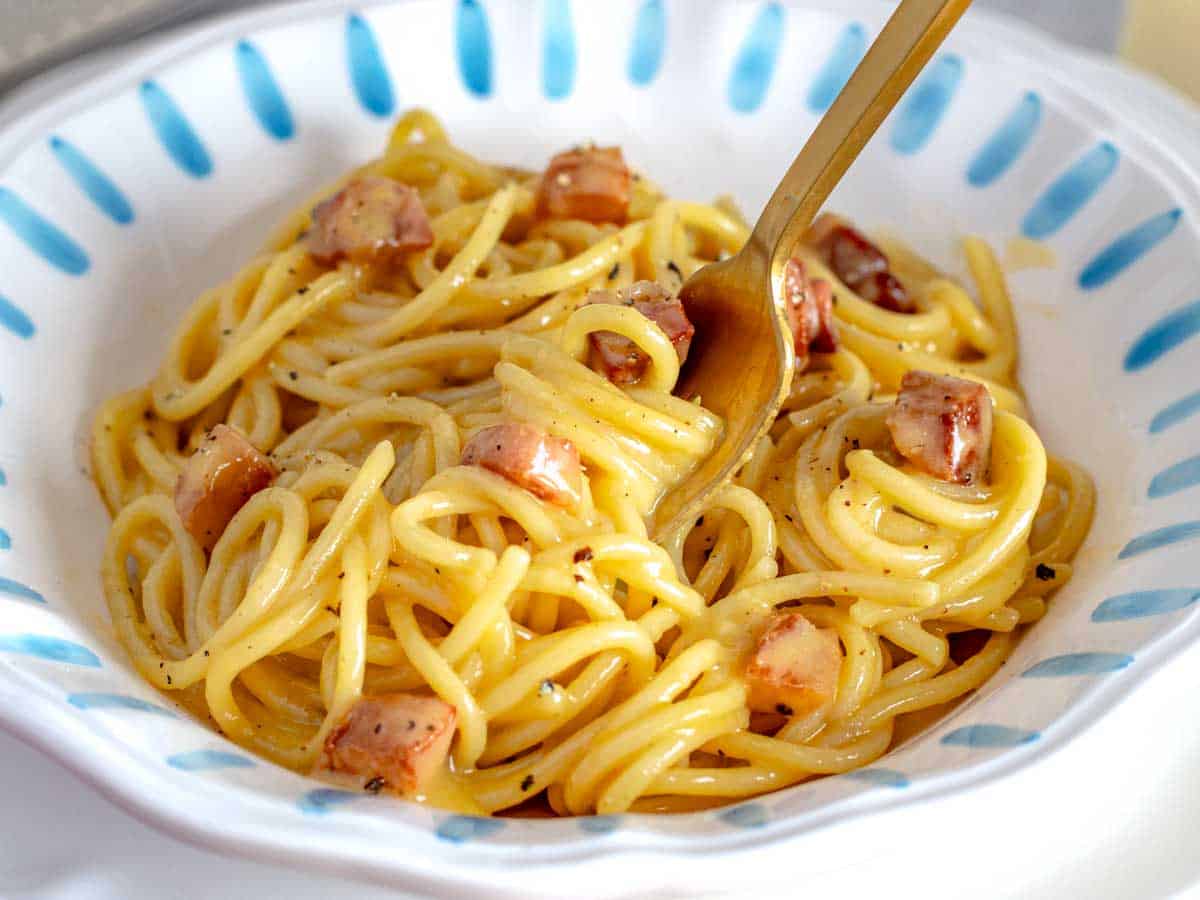
How to make spaghetti alla carbonara
Prepare the ingredients.
If necessary, remove the skin and the peppered side of the guanciale with a serrated knife. Cut the guanciale into ⅓ inch (0.8 cm) dice.
Separate the egg yolks from the egg whites. We only need the yolks.
Grate the parmesan and pecorino. I recommend using a microplane grater.
Put a large pot of water to boil, then add the salt.
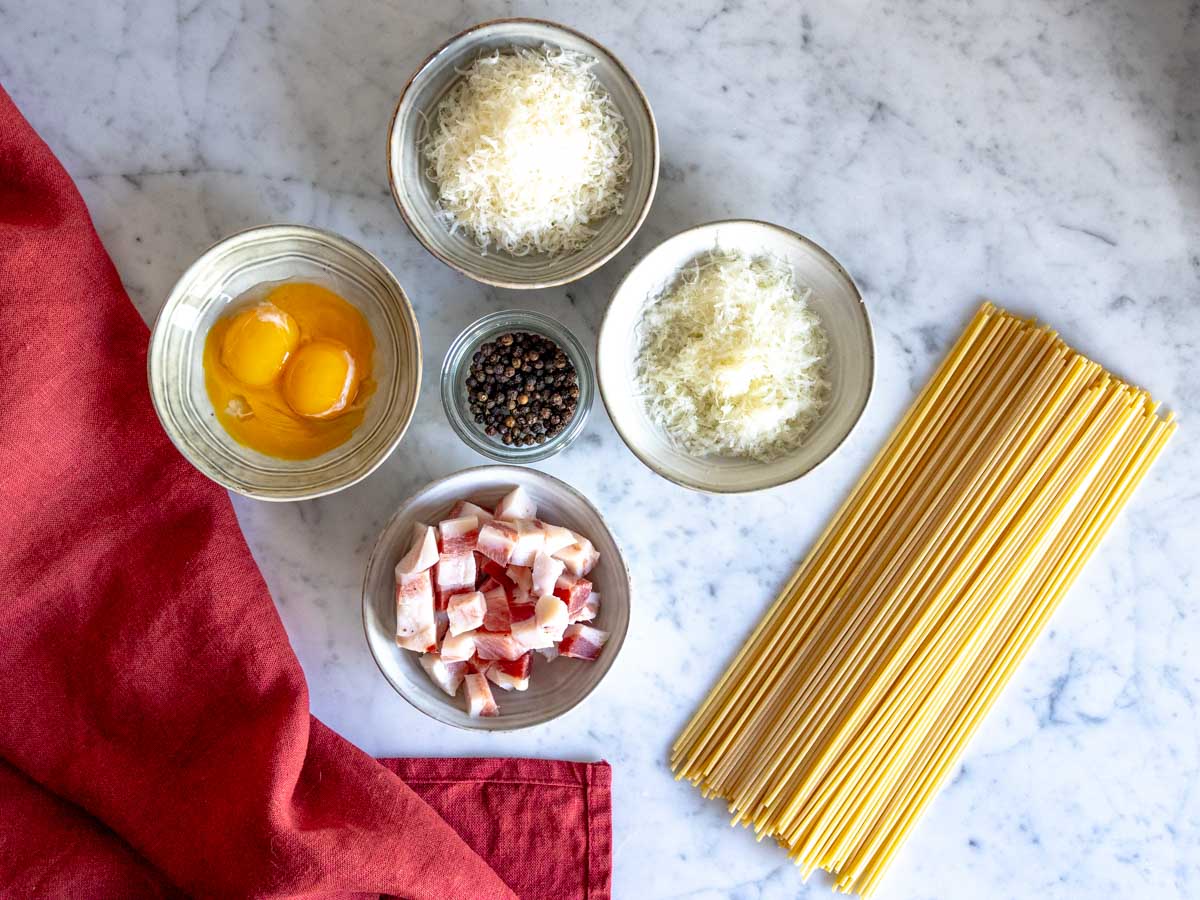
Cook the guanciale and the pasta.
Add the diced guanciale to a nonstick pan and cook it on medium heat for 5 minutes.
As the guanciale's fat melts, remove it from the pan, pour it into a separate container, and set it aside.
When the guanciale has browned, transfer it to a plate lined with kitchen paper and let it cool until crisp.
When the water boils, add the spaghetti and cook it per package instructions.
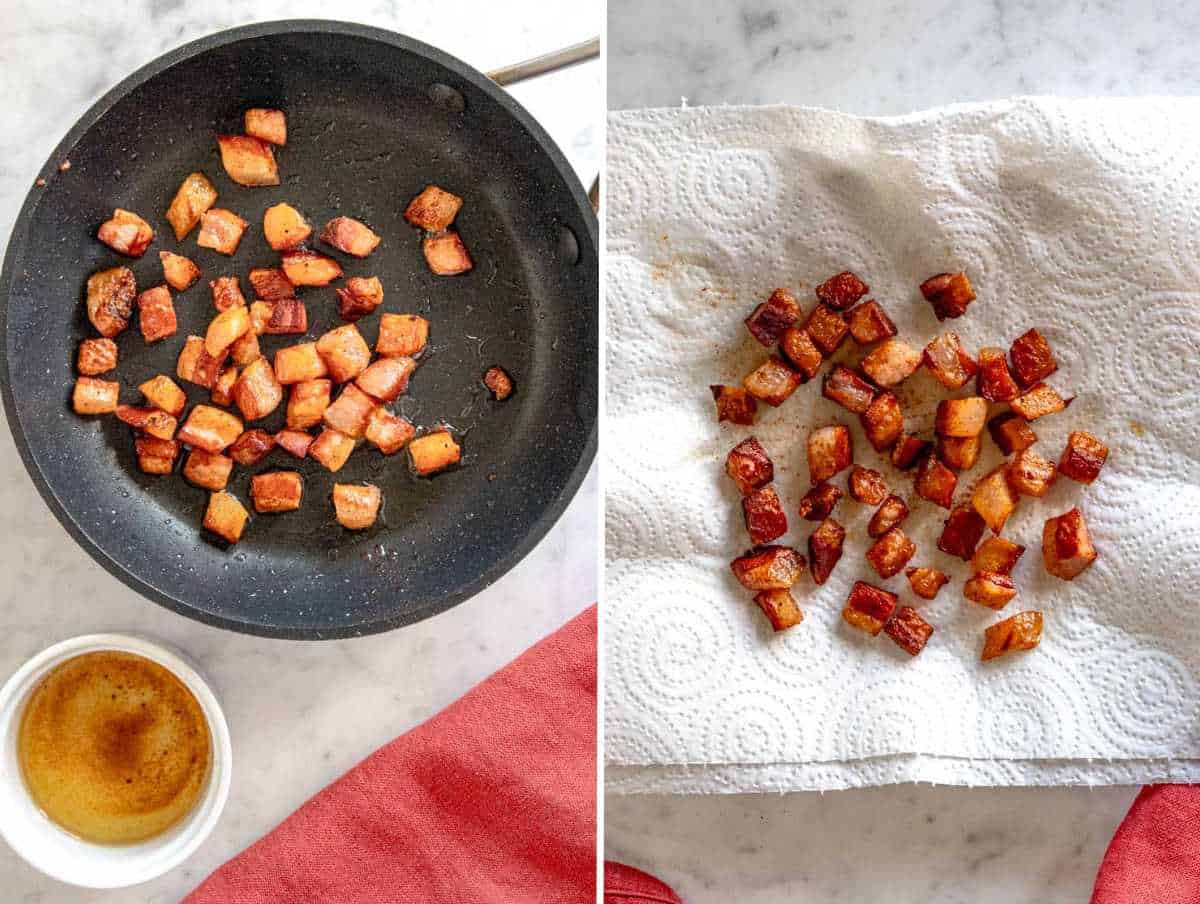
Make the CarboMix (the sauce).
While the pasta cooks, add egg yolks, grated parmesan and pecorino, and freshly ground black pepper to a large mixing bowl.
Add two tablespoons of cooking water and whisk until combined.
Optionally, add half of the melted guanciale fat into this mix for extra flavor.
While being careful, bring the mixing bowl with the eggs over the pot with the boiling water and whisk for about 3 minutes or until the temperature reaches 140°F (60°C).
This is the most crucial step in making the best carbonara because it allows us to 1) Pasteurize the egg to prevent bacterial contamination and 2) Cook the egg protein to make a creamier sauce that won't scramble.
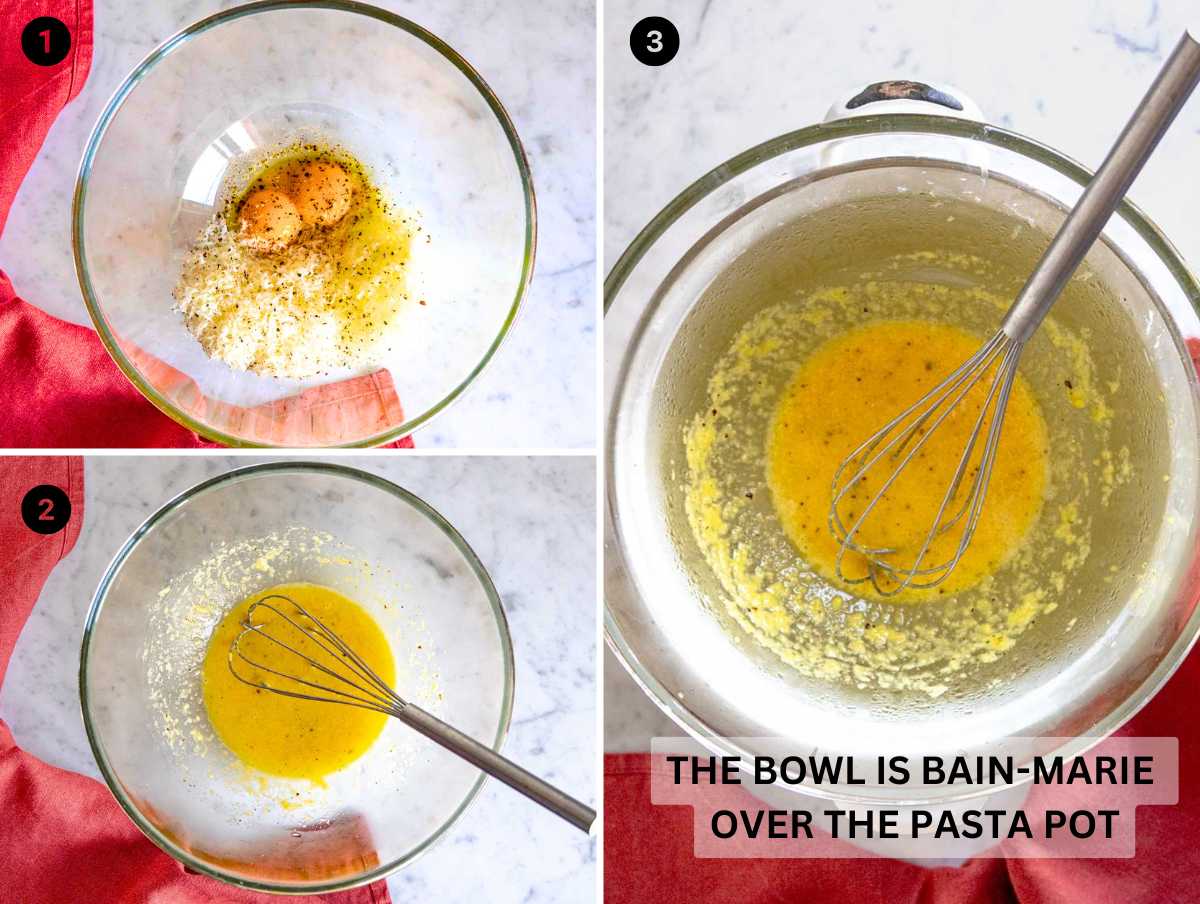
Mix pasta and sauce
Fish the spaghetti out of the pot and add it to the mixing bowl.
Add ½ a ladleful of pasta water and bring the bowl back to the pot.
Stir the pasta in the sauce with kitchen tongs and bain-marie for 1 to 2 minutes.
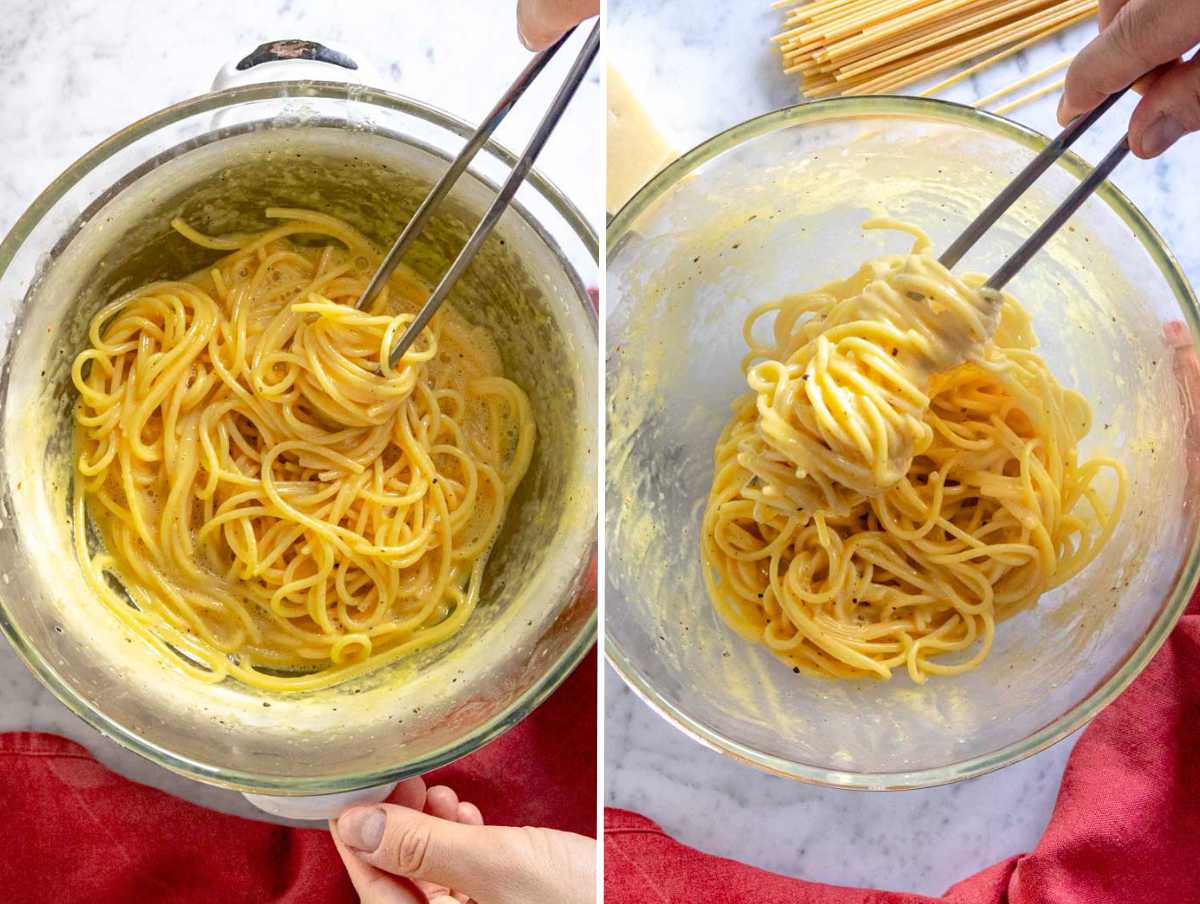
When the pasta is perfectly coated with sauce, add the guanciale and, if necessary, a couple of tablespoons of pasta water.
Give it a final stir before serving it with an optional sprinkle of grated pecorino and freshly ground black pepper.

The history of carbonara
The origins of carbonara are uncertain.
An Italian chef made carbonara around 1944 for the U.S. Army troops, liberating Italy from the Germans.
As ingredients were hard to find in post-war Italy, the chefs used the rations that the American troops brought with them: bacon, powdered milk, processed cheese, and dried eggs.
He mixed the ingredients and served them with pasta, and carbonara was allegedly born.
However, although it is commonly agreed that Carbonara is a Roman pasta recipe, the first written recipe was found in a book published in 1952 the United States.
In the book An Extraordinary Guide to What's Cooking on Chicago's Near North Side, the author interviews immigrant Italian chef Pietro Lencioni and American-Italian chef Armando Lorenzini, who were serving Pasta Carbonara in their restaurant, Armando's.
Through the last 70 years, carbonara has gone through countless variations and interpretations.
Ingredients like bacon, ham, garlic, and cream were first added and later removed.
Today, Italian carbonara is made with spaghetti, guanciale, egg yolk, pecorino, grana padano, salt, and black pepper.
Storage
Carbonara is best eaten right after it is made. It doesn't reheat well, as the pasta will lose creaminess and texture. We don't recommend making it in advance.
Recipe

Ingredients
- 6 ounces spaghetti
- 8 cups water to cook the pasta + 1 tablespoon salt in the water
- 2 large egg yolks
- 3 tablespoons grated parmesan
- 3 tablespoons grated pecorino substitute parmesan
- ¼ teaspoon black pepper best if freshly ground
- 3½ ounces guanciale substitute pancetta or bacon
Instructions
- COOK THE GUANCIALE: If necessary, trim the skin and the pepper side of the guanciale, then cut 3½ ounces guanciale into ⅓ inch (0.8 cm) dice.Add the diced guanciale to a nonstick pan and cook it on medium heat for 5 minutes.As the guanciale's fat melts, remove it from the pan, pour it into a separate container, and set it aside.When the guanciale has browned, transfer it to a plate lined with kitchen paper and let it cool until crisp.Bring 8 cups water to a boil, add the salt, and cook 6 ounces spaghetti per package instructions.
- MAKE THE SAUCE (CARBOMIX):While the pasta cooks, add 2 large egg yolks, 3 tablespoons grated parmesan, 3 tablespoons grated pecorino, and ¼ teaspoon black pepper to a large mixing bowl.Add 2 tablespoons cooking water and optionally half of the melted fat from the guanciale.Whisk until combined. While being careful, bring the mixing bowl with the eggs over the pot with the boiling water and whisk bain-marie for about 2 minutes or until mostly smooth and creamy.
- MIX PASTA AND SAUCE: Fish the spaghetti out of the water and add it to the mixing bowl.Add ½ a ladleful of pasta water and bring the bowl back bain-marie on to the pot.Stir the pasta in the sauce with kitchen tongs and bain-marie for 1 to 2 minutes.
- SERVE: When the pasta is perfectly coated with sauce, add the guanciale and, if necessary, a couple of tablespoons of pasta water.Give it a final stir before serving it with an optional sprinkle of grated pecorino and freshly ground black pepper.

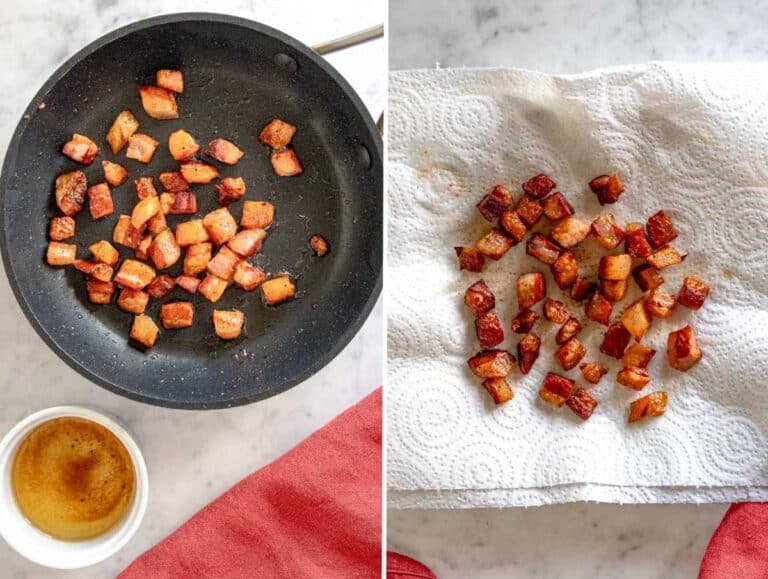
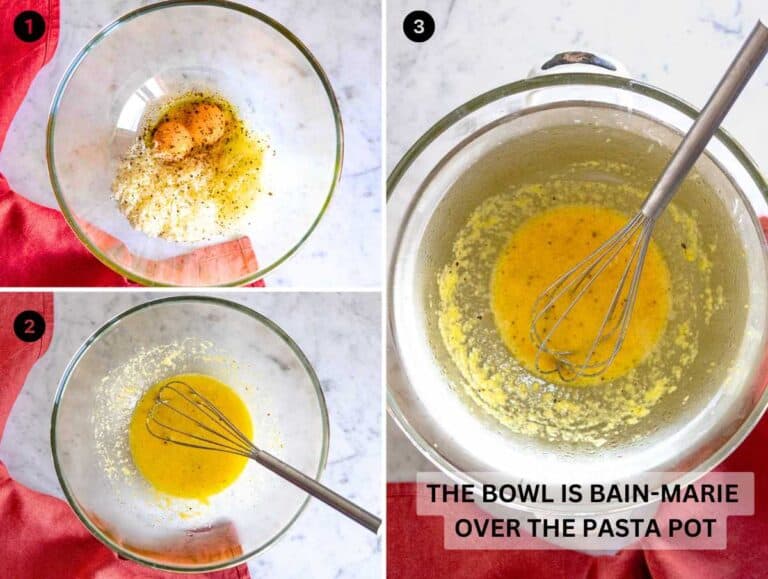
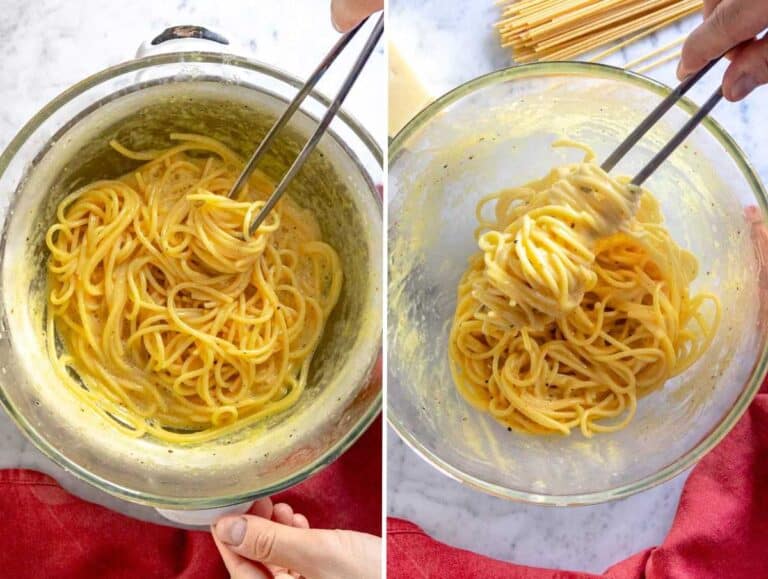
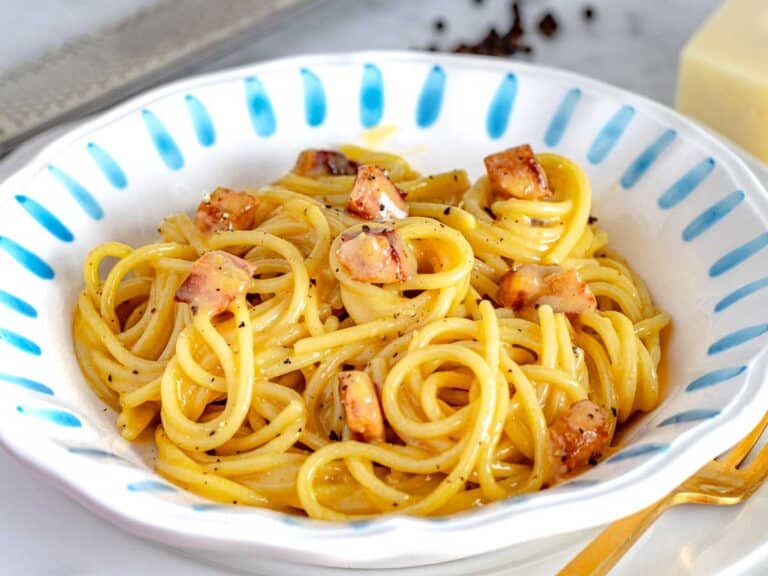


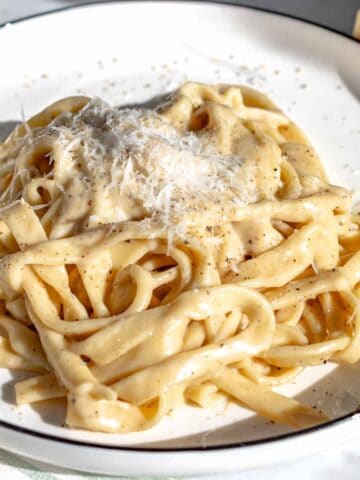

Sarah says
Gorgeous! Just like I had it in Rome during my travels! I love how the sauce is cooked Bain-Marie over the pasta pot. It got so creamy, it’s unbelievable.